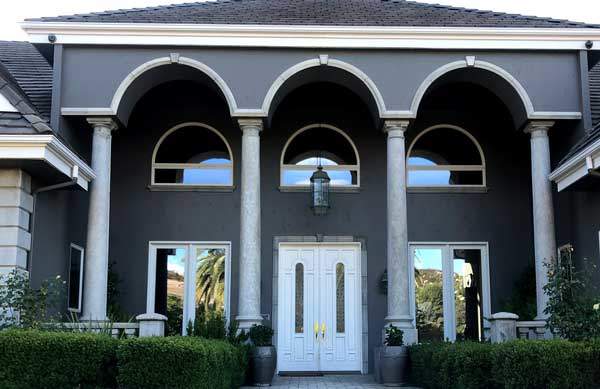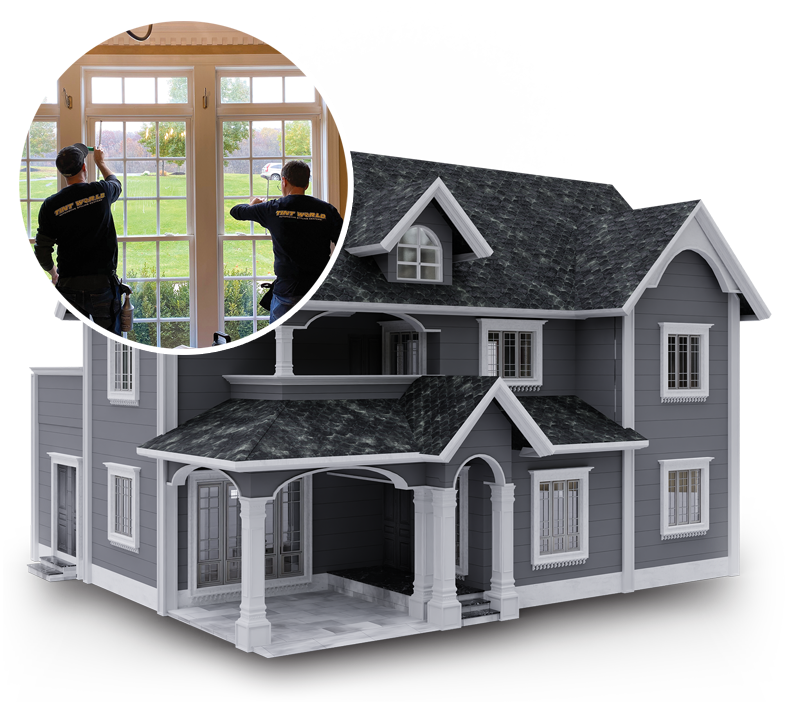Residential Window Tint: Shield Your Furnishings from UV Damages
Residential Window Tint: Shield Your Furnishings from UV Damages
Blog Article
Exactly How Residential Window Tinting Enhances Your Home's Energy Effectiveness
Residential window tinting provides a compelling option for homeowners looking for to boost energy performance within their home. By using specialized films to windows, it efficiently decreases warmth transfer, thus maintaining indoor temperature levels and minimizing the requirement for too much heating or cooling. This not just curtails energy intake but likewise supplies an extra comfy atmosphere by minimizing glare. Nevertheless, recognizing the subtleties of how tinting works and choosing the ideal type for your home can be critical. Curiously, what elements should one think about prior to making this financial investment?
Comprehending Home Window Tinting
Comprehending window tinting is necessary for home owners looking for to improve both convenience and energy efficiency in their home. Residential Window Tint. Window tinting includes the application of a thin film to the interior or outside surface area of glass home windows. This movie can substantially modulate the amount of sunlight and warmth that gets in a home, therefore influencing indoor climate conditions
There are different kinds of window tinting films readily available, each with distinctive residential or commercial properties. For instance, colored movies absorb solar power, while reflective movies deflect it away from the glass surface area. Ceramic films supply an equilibrium of exposure and heat denial, making them a prominent choice amongst house owners. The effectiveness of home window tinting is commonly determined by its Visible Light Transmission (VLT) percent, which suggests just how much light can go through the film.
Advantages of Power Efficiency
Window tinting not only improves appearances however likewise plays a significant duty in improving power efficiency within property spaces. By minimizing heat transfer with home windows, tinted films develop a more steady interior climate, which can cause substantial reductions in power intake for cooling and heating. This power efficiency equates right into reduced utility bills, providing house owners with significant long-term cost savings.

Furthermore, home window tinting improves the comfort of living rooms. By lessening glare and obstructing damaging UV rays, colored windows create an even more enjoyable setting, which can cause improved wellness for occupants. The defense against UV rays additionally assists maintain furniture and flooring from fading, adding to the longevity of family items.
How Tinting Functions
Tinting films run through a mix of advanced materials and technologies created to control the amount of solar power entering a home. Largely composed of polyester, these films often include ceramic or metal particles that show and soak up warmth. This dual ability permits them to considerably minimize the infiltration of ultraviolet (UV) rays and infrared radiation while permitting visible light to travel through.
The effectiveness of window tinting is determined by its solar warmth gain coefficient (SHGC), which indicates just how much solar power is sent investigate this site through the window. Reduced SHGC values are preferable as they signify higher warmth rejection. Furthermore, window colors can include a selection of tones, allowing property owners to personalize their visual choices while boosting power efficiency.
Furthermore, these films serve as a barrier, stopping warmth loss throughout cooler months by mirroring indoor heat back right into the living room. This thermal insulation result complements the cooling advantages gained throughout warmer months, adding to a well balanced interior environment year-round. By taking care of solar power properly, household home window tinting not just boosts convenience however likewise plays a crucial function in decreasing energy intake and lowering utility bills.
Choosing the Right Color

There are numerous kinds of window movies readily available, including colored, metalized, and ceramic. Colored films are economical yet might have restricted sturdiness. Metalized movies supply better heat denial yet can hinder electronic signals. Ceramic movies give excellent heat control without endangering visibility and are highly long lasting, making them a preferred selection.
Noticeable light transmission go to website (VLT) is one more critical element, as it suggests the amount of natural light that can pass with the colored glass. House owners ought to choose a tint with a VLT that matches their illumination preferences while still offering appropriate glow reduction.
Furthermore, evaluating the solar warm gain coefficient (SHGC) can help identify exactly how well a tint can block heat from sunshine. A reduced SHGC suggests better heat control, inevitably boosting power effectiveness.
Installation and Upkeep Tips
Correct setup and upkeep are vital wikipedia reference elements in taking full advantage of the advantages of residential home window tinting. Specialists also utilize specialized methods and devices, which can enhance the toughness and effectiveness of the tint.
Adhering to setup, maintenance is important to lengthen the life of the home window film. It is suggested to wait at the very least 30 days before cleaning the colored windows to permit the adhesive to treat fully.
Attending to these issues without delay can prevent more damages and maintain energy efficiency. By sticking to these installation and upkeep suggestions, property owners can ensure their window tinting proceeds to supply significant power cost savings and comfort for years to come.
Conclusion
In verdict, property window tinting offers as a reliable remedy for boosting energy performance within homes. By decreasing warmth transfer and blocking hazardous UV rays, window films contribute to reduce energy consumption and improved indoor comfort. The selection of suitable tinting products, along with proper installation and maintenance, better optimizes these benefits. Inevitably, window tinting stands for a sustainable investment that not only decreases utility expenses yet additionally advertises a comfy living atmosphere throughout the year.
Window tinting involves the application of a thin film to the interior or outside surface of glass windows. By decreasing warm transfer with windows, colored films produce an extra stable interior climate, which can lead to substantial reductions in energy intake for heating and air conditioning.The efficiency of window tinting is determined by its solar heat gain coefficient (SHGC), which indicates just how much solar power is transferred through the window. By managing solar power successfully, property home window tinting not just boosts comfort yet also plays a crucial role in lowering energy intake and reducing energy expenses.
By lowering warmth transfer and obstructing damaging UV rays, home window movies add to lower energy consumption and enhanced interior convenience.
Report this page